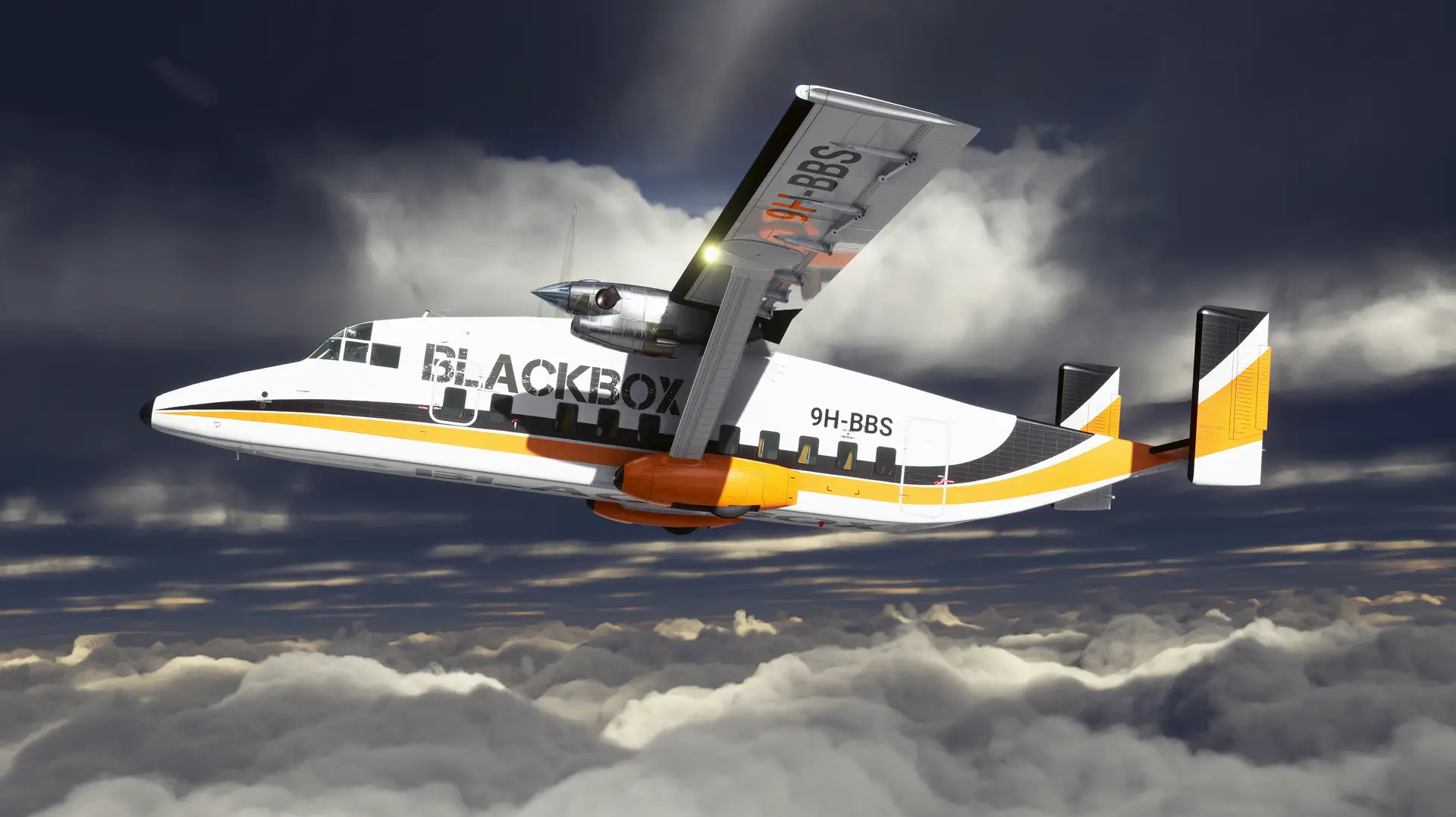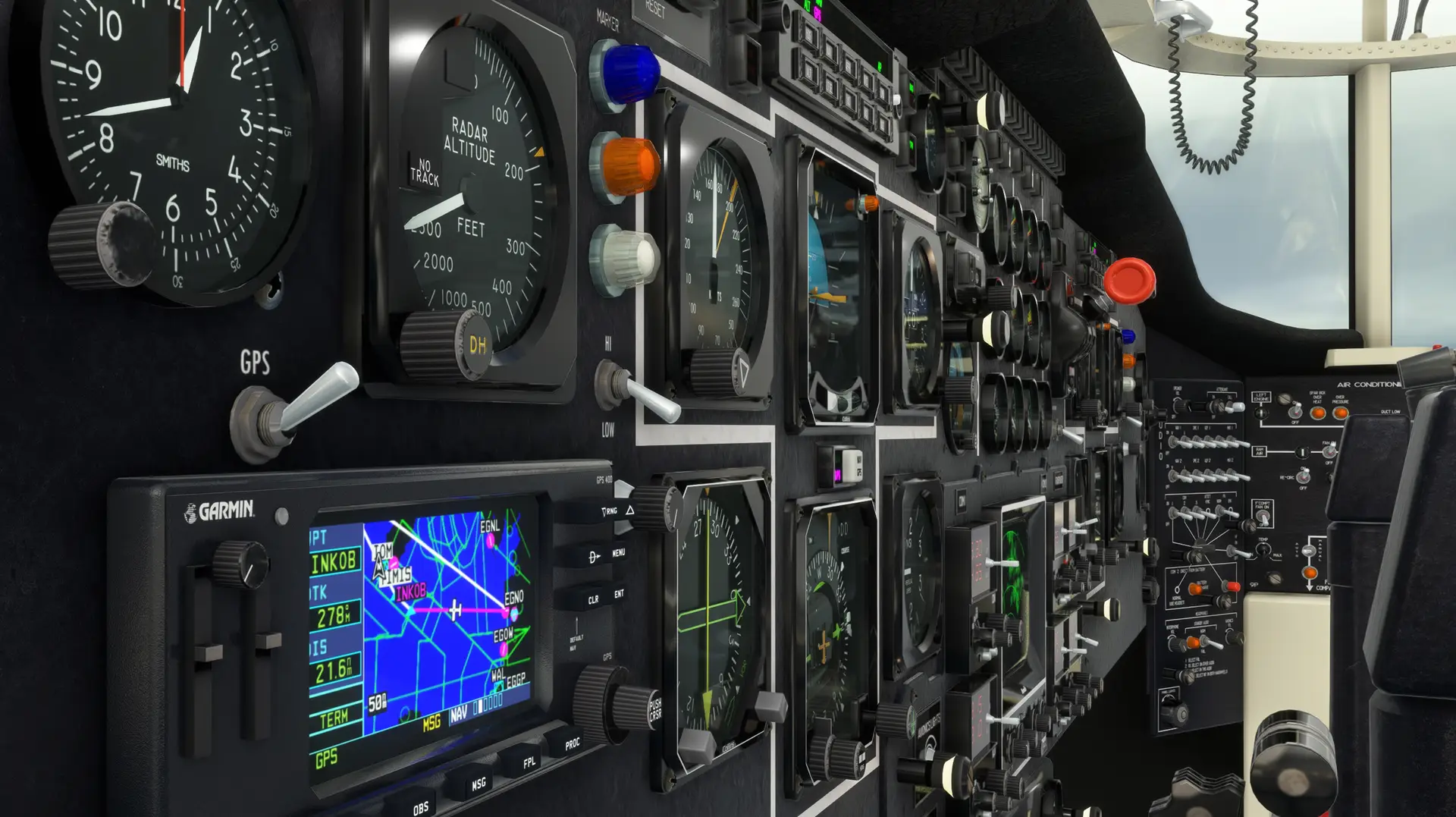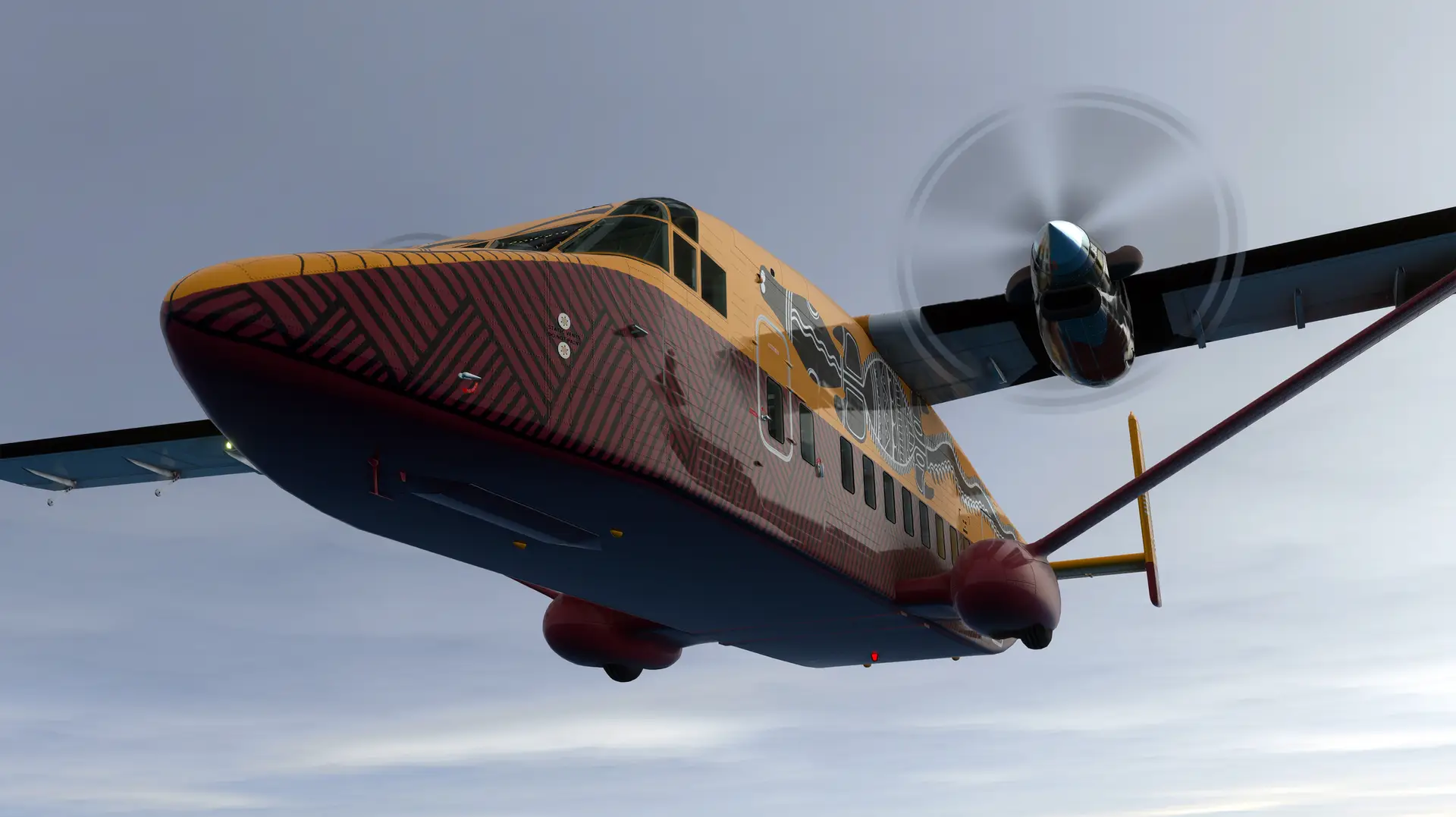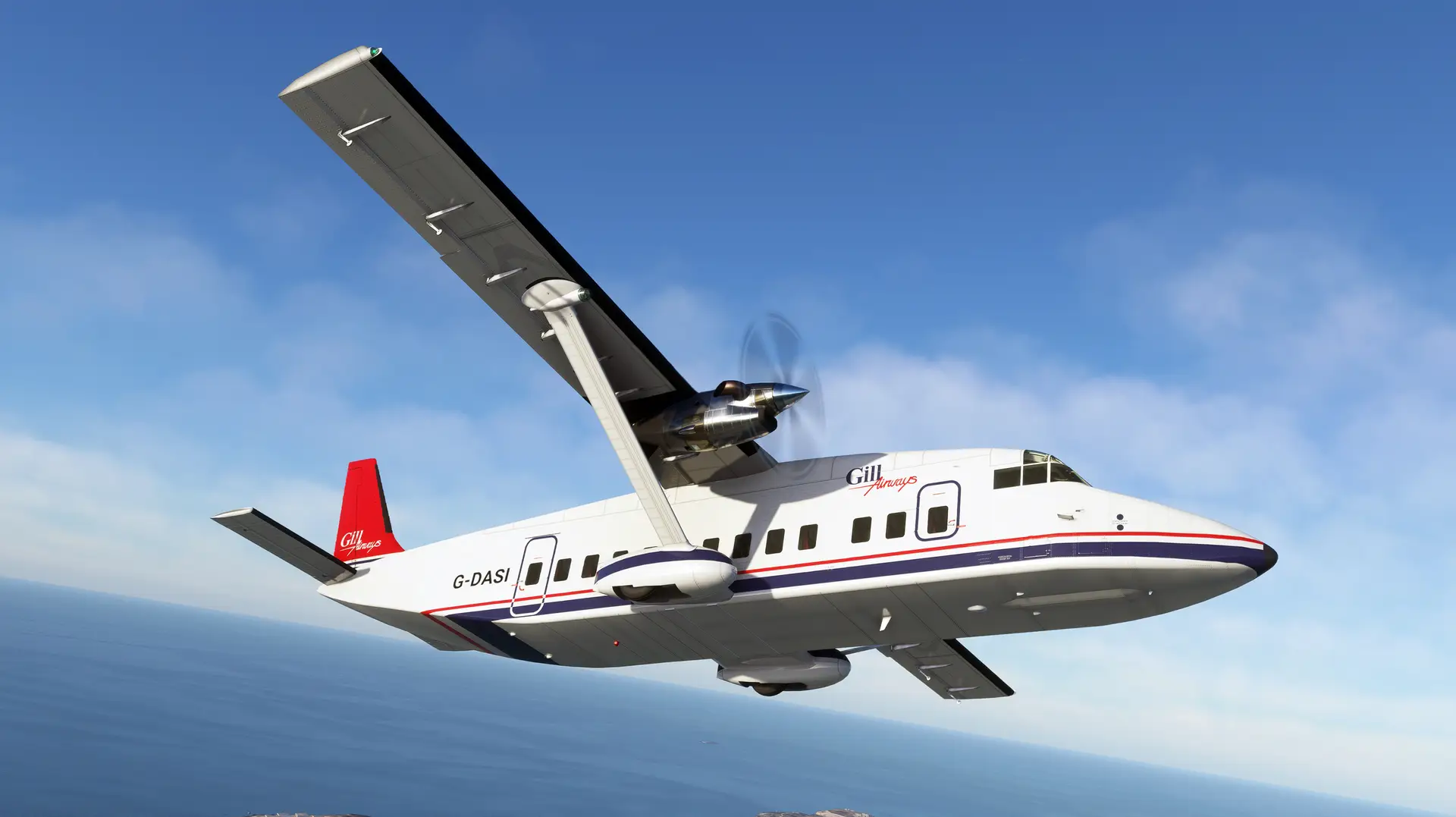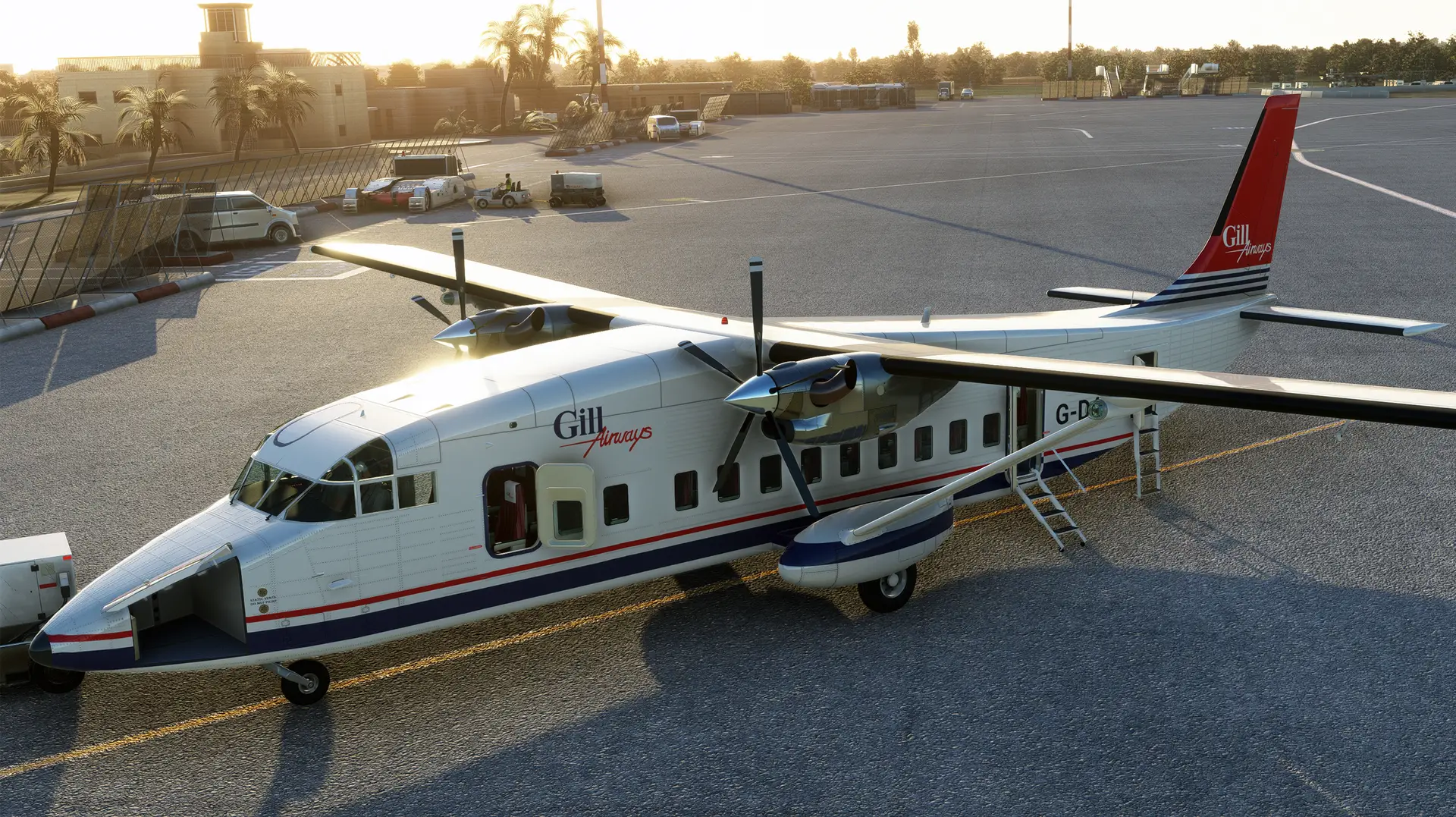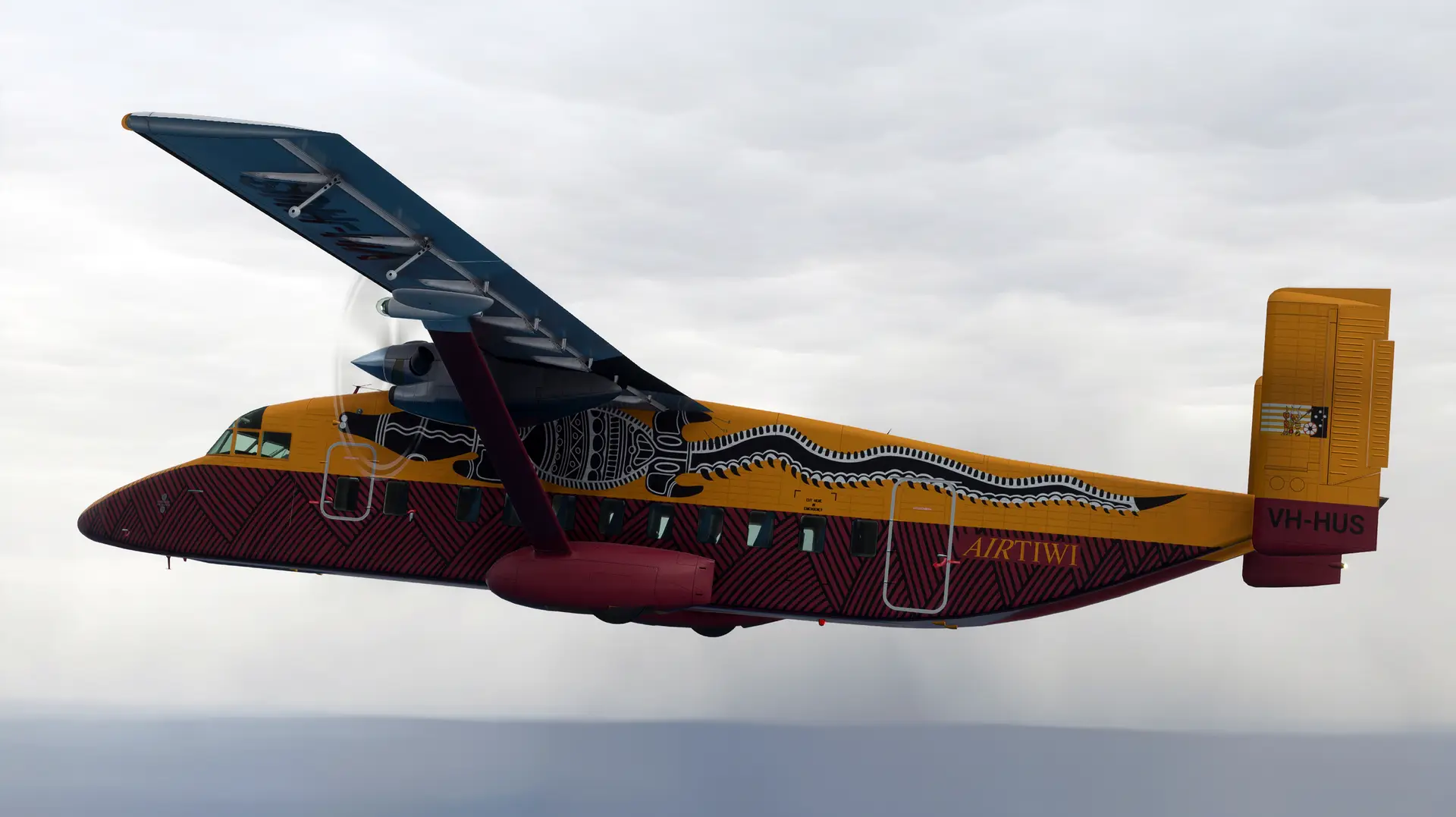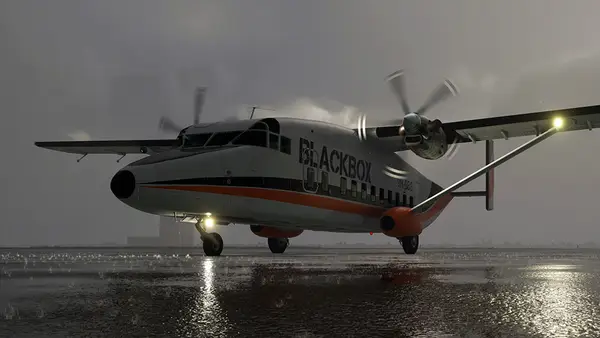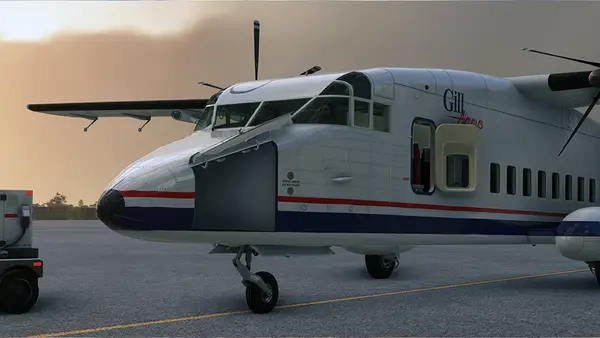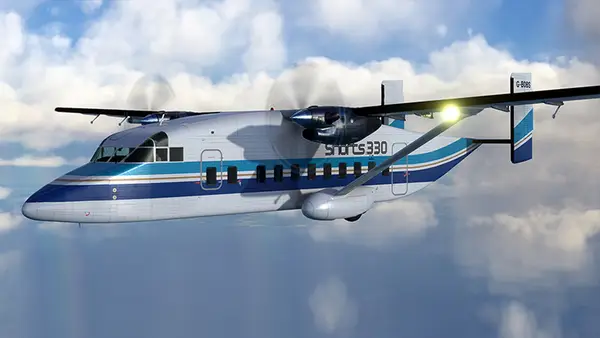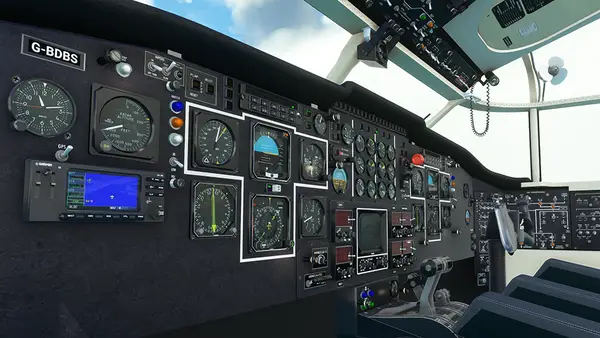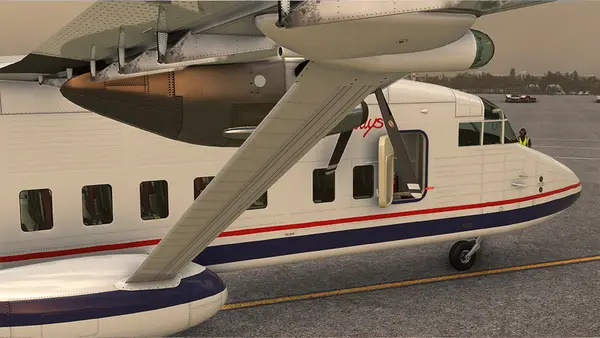The Short SD3-30 is a twin-engine, high-wing, STOL (short take-off and landing) utility aircraft produced by Short Brothers of Ireland. The SD3-30, which is also referenced as the Short 330, is piloted by two and can seat up to 30 passengers. The aircraft took its first flight on August 22, 1974 and was introduced in 1976. Production ran until 1992, with Short Brothers manufacturing a total of 141 SD3-30s, including passenger models, freight models, and military variants. The aircraft proved successful in its primary role of regional commuter airliner, notably with its ability to operate out of small airports.
The company developed the SD3-30 based off their SC.7 Skyvan, a successful STOL utility aircraft. The SD3-30 shares the Skyvan’s basic utilitarian design, which comprises a boxy fuselage, a strut-braced high-aspect ratio main wing, and an empennage featuring twin vertical stabilizers, one mounted on each end of its single horizontal stabilizer.
The SD3-30 measures 58 feet in length, stands 16 feet, 3 inches tall, and has a wingspan of 74 feet, 8 inches. It features retractable tricycle landing gear, with its main gear wheels housed in fairings attached to the lower wing struts. It is powered by two 1,200-horsepower Pratt & Whitney Canada PT6A-45-R turboprop engines that turn 5-blade, constant-speed propellers. The SD3-30 has a range of 1,050 miles, a service ceiling of 20,000 feet above sea level, and it climbs at 1,180 feet per minute. It cruises at 180 miles per hour, stalls at 84 mph, and has a top speed of 220 mph.
The Short SD3-60 is a twin-engine regional commercial aircraft by aviation producer Short Brothers of Ireland. The SD3-60, which is also called the Short 360, was developed from the smaller SD3-30, which was itself an evolutionary development of the company’s SC.7 Skyvan. The SD3-60 took its maiden flight on June 1, 1981 and it was introduced into commercial service in November of 1982. Short Brothers manufactured 165 SD3-60s during a production run that lasted from 1981 to 1991.
The aircraft is piloted by two and can accommodate up to 36 passengers. While not technically a STOL (short take-off and landing) aircraft like its predecessors the SD3-30 and the SC.7, the SD3-60 has proven itself to be worthy on unimproved and short field operations. The SD3-60 has been employed successfully by a wide spectrum of users throughout the world for passenger use, cargo, and some military applications.
The SD3-60 has a strut-braced, high-mounted, high-aspect ratio main wing with a span of 74 feet, 10 inches. It measures 70 feet, 10 inches in length and stands 23 feet, 8 inches tall. It features a standard empennage and retractable tricycle landing gear, with the main wheels housed in fairings that are mounted on the lower extremities of the aircraft’s wing struts. It is powered by two wing-mounted Pratt & Whitney Canada PT6A-65AR turboprop engines. Each engine produces 1,424 horsepower and drives a 6-blade, constant-speed propeller. The SD3-60 has a top speed of 251 miles per hour, a cruising speed of 210 mph, a service ceiling of 20,000 feet above sea level, and a range of 991 miles.
The C-23 Sherpa is a high-wing, twin-engine, STOL (short take-off and landing) military utility aircraft produced by Ireland’s Short Brothers. The C-23 took its first flight on December 23, 1984 and was ordered by the United States military for introduction into its inventory in 1984.
Short Brothers produced a number of variants of the C-23, all based on civilian aircraft that they had previously fielded. The first iteration of the C-23 evolved from their successful SD3-30 (also called the 330), a general-purpose commercial aircraft that served primarily as a short-hop regional airliner. Short Brothers created the C-23A from the SD3-30 by adding a rear cargo door and ramp, adding a forward port-side cargo door, and strengthening the floor and fuselage. The C-23B was a further refinement of the C-23A that included strengthened landing gear and cabin windows. Both variants proved exceptional personnel carriers and cargo haulers, notably from austere and short airfields. The C-23 has served the United States Air Force and the United States Army since 1984.
The C-23 is piloted by two and can carry up to 30 passengers, 7,000 pounds of cargo, or some combination. It measures 58 feet in length, stands 16 feet, 3 inches tall, and features a straight, strut-braced, high-aspect ratio main wing with a span of 74 feet, 8 inches. It has retractable tricycle landing gear and a tail unit that has two vertical stabilizers, one on each end of its single horizontal stabilizer. The Sherpa is powered by two Pratt & Whitney Canada PT6A-45-R turboprop engines that each produce up to 1,200 horsepower and turn a 5-blade, constant-speed propeller. It has a range of 1,050 miles, climbs at 1,180 feet per minute, and has a service ceiling of 20,000 feet above sea level. The Sherpa has a stall speed of 84 miles per hour, it cruises at 180 mph, and it has a top end of 220.
